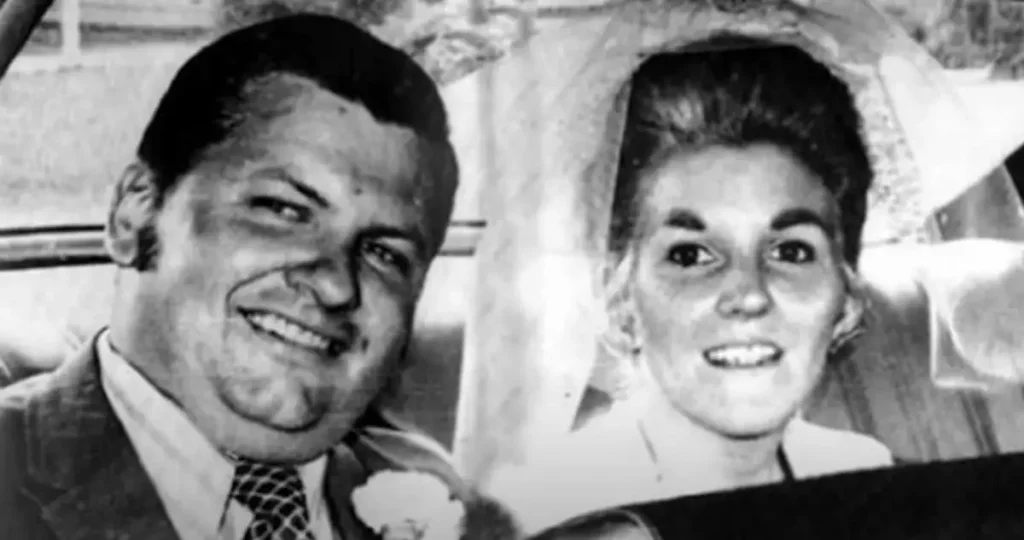Michael Gacy: The Dark Legacy Of The Killer Clown
Michael Gacy is one of the most infamous serial killers in American history, whose chilling crimes left an indelible mark on society. Known as the "Killer Clown," his story continues to captivate and terrify people around the world. His ability to deceive those around him while committing heinous acts has made him a subject of fascination and horror. In this article, we will delve into the life, crimes, and legacy of Michael Gacy, exploring what drove him to become one of the darkest figures in modern history.
While Gacy's public persona was that of a beloved entertainer who brought joy to children and charity events, his private life revealed a much darker side. The contrast between his outward charm and his monstrous actions has puzzled psychologists and criminologists for decades. Understanding the complexities of his character helps shed light on the psychological underpinnings of serial killers and the devastating impact they have on society.
This article aims to provide a comprehensive overview of Michael Gacy's life, crimes, and the enduring legacy of his horrifying deeds. By examining his background, motives, and the investigation that eventually led to his capture, we hope to offer readers a deeper understanding of this tragic chapter in criminal history. Let's begin by exploring his early life and the events that shaped his path toward infamy.
- Skymovieshd In Your Ultimate Guide To Streaming Movies Online
- Hdhub4u 4k Your Ultimate Destination For Highquality Entertainment
Table of Contents
- Biography of Michael Gacy
- Early Life and Family Background
- The Beginning of His Criminal Career
- The Infamous Killer Clown Persona
- Victims and Their Stories
- The Investigation and Arrest
- Trial and Conviction
- Psychological Analysis of Michael Gacy
- Impact on Society and Popular Culture
- The Lasting Legacy of Michael Gacy
Biography of Michael Gacy
Personal Information
Below is a table summarizing key details about Michael Gacy's life:
| Full Name | John Wayne Gacy Jr. |
|---|---|
| Birth Date | March 17, 1942 |
| Birthplace | Chicago, Illinois, USA |
| Death Date | May 10, 1994 |
| Cause of Death | Execution by lethal injection |
Early Life and Family Background
Michael Gacy was born on March 17, 1942, in Chicago, Illinois. Growing up in a working-class family, Gacy faced a turbulent childhood marked by abuse and neglect. His father, John Wayne Gacy Sr., was an alcoholic who frequently subjected his children to physical and emotional abuse. This early exposure to violence and instability likely contributed to the psychological issues that would later manifest in Gacy's adult life.
Gacy's educational journey was fraught with challenges, as he struggled academically and socially. Despite these difficulties, he managed to graduate from high school and pursue various career paths. His entrepreneurial spirit led him to establish successful businesses, including a construction company, which earned him respect and admiration in his community.
- 300mb Movies Hub Your Ultimate Guide To Downloading And Streaming Movies
- Tamil Movies 2025 Download Your Ultimate Guide To Legally Streaming And Downloading
The Beginning of His Criminal Career
Gacy's descent into criminal behavior began long before his infamous murders. In 1968, he was convicted of sexually assaulting a teenage boy, leading to a six-year prison sentence. This early criminal act foreshadowed the dark tendencies that would later define his life. Upon his release, Gacy returned to Chicago, where he resumed his outwardly normal life as a respected businessman and community volunteer.
The Infamous Killer Clown Persona
Entertaining the Community
Gacy's alter ego, "Pogo the Clown," became a beloved figure at children's parties and charity events. Dressed in colorful costumes and makeup, Gacy entertained countless families, masking his sinister nature behind a façade of kindness and joy. This duality between his public persona and private life highlights the complexity of his psychological makeup.
Victims and Their Stories
Over the course of several years, Michael Gacy lured young men and boys to their deaths, often targeting runaways and vulnerable individuals. His victims were subjected to unimaginable horrors before being buried in the crawl space beneath his home or dumped in nearby rivers. Below are some key statistics about his crimes:
- Total number of confirmed victims: 33
- Age range of victims: 14 to 21 years old
- Duration of his killing spree: 1972–1978
The Investigation and Arrest
The unraveling of Gacy's crimes began in December 1978 when authorities discovered the body of Robert Piest, a missing teenager, in a river near Gacy's home. A subsequent search of his property revealed the remains of multiple victims buried in the crawl space, leading to his arrest on December 21, 1978. The investigation uncovered a web of deceit and horror that shocked the nation.
Trial and Conviction
Michael Gacy's trial, held in 1980, was one of the most high-profile legal cases of its time. Prosecutors presented overwhelming evidence of his guilt, including forensic findings and witness testimonies. Despite his defense team's attempts to portray him as mentally unstable, Gacy was found guilty on all counts and sentenced to death for 12 of the murders. The trial brought closure to the families of his victims while exposing the failures of the justice system to prevent such atrocities.
Psychological Analysis of Michael Gacy
Understanding the Mind of a Serial Killer
Psychologists have long debated the factors that contribute to the creation of a serial killer. In Gacy's case, early childhood trauma, sexual deviance, and a lack of empathy played significant roles in shaping his criminal behavior. Studies suggest that individuals like Gacy often exhibit narcissistic tendencies and a desire for control, which manifest in their predatory actions.
Impact on Society and Popular Culture
The case of Michael Gacy has had a lasting impact on society, influencing both public policy and popular culture. His crimes prompted changes in law enforcement practices, particularly in the handling of missing persons cases. Additionally, Gacy's story has inspired numerous books, documentaries, and films, serving as a cautionary tale about the dangers lurking beneath seemingly ordinary surfaces.
The Lasting Legacy of Michael Gacy
Michael Gacy's legacy is one of infamy, a stark reminder of the darkness that can exist within human nature. His story continues to resonate with people around the world, sparking discussions about mental health, criminal justice, and the prevention of similar tragedies. By studying cases like Gacy's, society can work toward a better understanding of the complexities of human behavior and strive to create a safer world for future generations.
Conclusion
Michael Gacy's life and crimes represent one of the darkest chapters in American history. From his early years of abuse and neglect to his transformation into the "Killer Clown," his story serves as a chilling reminder of the capacity for evil that exists within individuals. Through careful examination of his life, we can gain valuable insights into the psychological and social factors that contribute to such horrific acts.
We invite you to share your thoughts and questions in the comments section below. Additionally, feel free to explore other articles on our site for more in-depth looks at important topics. Together, we can continue the conversation about how to prevent these tragedies and honor the memories of those lost to violence.
- Ullu Movie Download Your Ultimate Guide To Streaming And Downloading Indian Web Series
- Download New Tamil Movies Your Ultimate Guide To Legal Streaming And Downloads

Michael Gacy Son of the “Killer Clown” John Wayne Gacy

Michael Gacy Michael Gacy Everything To Know About John Wayne Gacy's Son

Michael Gacy Son of the “Killer Clown” John Wayne Gacy